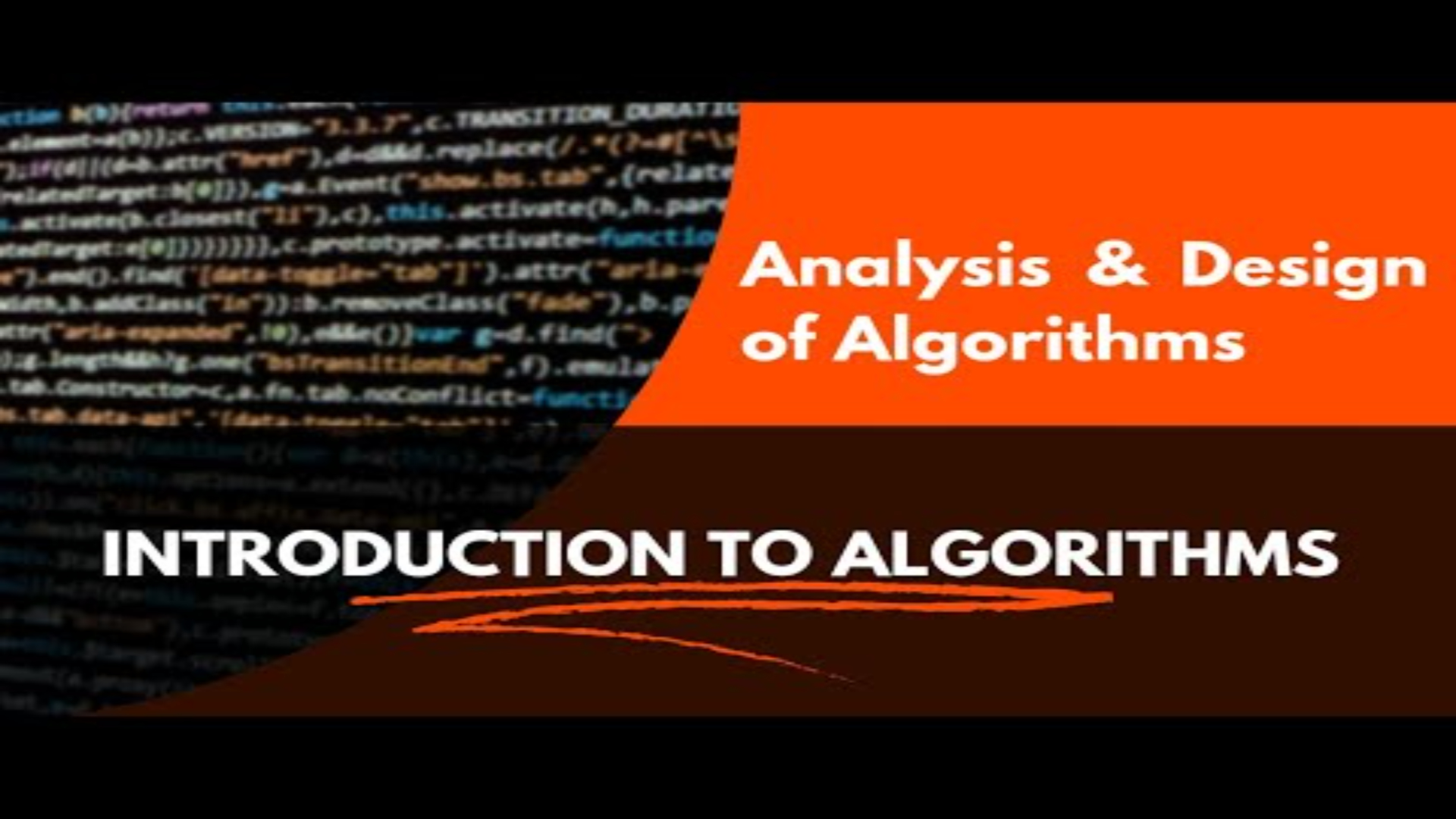Design and Analysis of Algorithms

Analysis of Algorithms is a fundamental aspect of computer science that involves evaluating performance of algorithms and programs. Efficiency is measured in terms of time and space.
Design and Analysis of Algorithms Tutorial
An Algorithm is a sequence of steps to solve a problem. It acts like a set of instructions on how a program should be executed. Thus, there is no fixed structure of an algorithm. Design and Analysis of Algorithms covers the concepts of designing an algorithm as to solve various problems in computer science and information technology, and also analyze the complexity of these algorithms designed.
The main aim of designing an algorithm is to provide a optimal solution for a problem. Not all problems must have similar type of solutions; an optimal solution for one problem may not be optimal for another. Therefore, we must adopt various strategies to provide feasible solutions for all types of problems.
This tutorial introduces the fundamental concepts of Designing Strategies, Complexity analysis of Algorithms, followed by problems on Graph Theory and Sorting methods. This tutorial also includes the basic concepts on Complexity theory.
Why Design and Analysis of Algorithms?
One computer problem might have several versions of a solution. In this case, every approach taken to solve the computer problem is correct. However, choosing the best-suited solution will improve the efficiency of the program.
There might be a misconception that smaller algorithms are best-suited solutions in most cases. But, a feasible solution is not based on the length of algorithm, but the one with efficient complexity (time and space complexity).
We study Design and Analysis of Algorithms to analyse the complexity of all the versions of a solution to a computer problem.
Design Strategies
There are various types of strategies in order to design algorithms for various problems. Some of them are listed as follows −
- Greedy Approach
- Divide & Conquer Approach
- Dynamic Programming Approach
- Randomization Approach
- Approximation Approach
- Recursive Approach
- Branch and Bound Approach
Analysis of Algorithms
To analyze the feasibility of an algorithm designed, we calculate the complexity of it. This is represented in three notations, called asymptotic notations. Asymptotic notations are as follows −
- Worst-Case Scenario − Big Oh and Little Oh Notations
- Best-Case Scenario − Big Omega and Little Omega Notations
- Average-Case Scenario − Theta Notation
Each solution is analyzed in all scenarios of the problem, and the solution having the best worst-case is said to be optimal. Thus, providing an efficient algorithm.
Applications of DAA
There are applications of Design and Analysis of Algorithms (DAA) in a wide range of fields. Here are some of the common fields where it is used:
- Computer programming: Used in computer programming to solve problems efficiently. This includes developing algorithms for sorting, searching, and manipulating data structures.
- Big data processing: Also used to develop and analyse algorithms for operations such as data mining, machine learning, and natural language processing, in order to handle large sets of data.
- Networking: Network protocols and algorithms are developed for routing, flow control, congestion control, and network security. DAA is used to design and analyse these algorithms.
- Artificial intelligence: Used to design and analyse algorithms for tasks in Artificial Intelligence such as computer vision, speech recognition, and natural language understanding.
- Scientific computing: DAA in scientific computing is used to develop algorithms for operations like numerical integration, optimization, and simulation.
- Game development: In game development, we use design and analysis of algorithms for pathfinding, collision detection, and physics simulation.
- Cryptography: DAA is also used in the design and analysis of cryptographic algorithms, such as RSA and AES, which are used to secure data transmission and storage.
Who Should Learn DAA
This tutorial has been designed for students pursuing a degree in any computer science, engineering, and/or information technology related fields. It attempts to help students to grasp the essential concepts involved in algorithm design.
Prerequisites to Learn DAA
The readers should have basic knowledge of programming and mathematics. The readers should know data structure very well. Moreover, it is preferred if the readers have basic understanding of Formal Language and Automata Theory.
DAA Jobs and Opportunities
Many top companies are actively recruiting experts in Design and Analysis of Algorithms, and they offer roles such as Software Engineer, Data Scientist, Machine Learning Engineer, and more. These companies need individuals who can solve complex problems, analyse data, and design algorithms to drive their business forward. Here is the list of few such companies −
- Amazon
- Microsoft
- Apple
- Adobe
- JPMorgan Chase
- Goldman Sachs
- Walmart
- Johnson & Johnson
- Airbnb
- Tesla
The demand for DAA professionals is continually growing across various sectors. By developing expertise in these areas, you can open up a wide range of career opportunities in some of the world’s leading companies.
To get started, there are user-friendly tutorials and resources available to help you master DAA. These materials are designed to prepare you for technical interviews and certification exams, and you can learn at your own pace, anytime and anywhere.